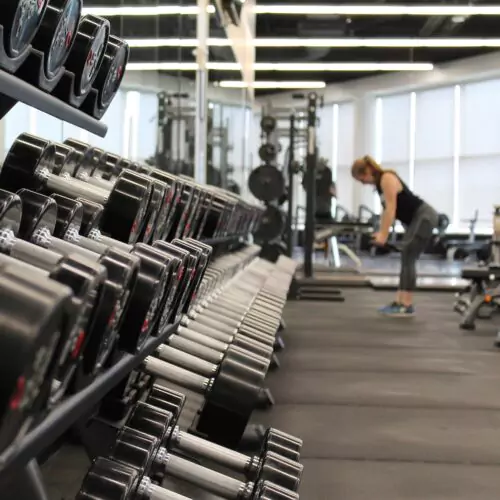Gyms across the country are going to be packed
this week. It’s exciting to see everyones new
enthusiasm and commitment to fitness and health.
However, it is also discouraging to know that for
many this dedication will not last.
If you are new to the gym, or haven’t paid a visit
in awhile, this is for you. A little know how in the
gym will make you feel more comfortable and
confident. A few training tips will also make you
less likely to injure yourself.
Safety should be your number one concern if you
are in this for the long haul. Aches, pains, and
injury are one of the leading causes of gym drop
out.
So, here are 7 tips to play it safe at the gym
this new year.
1. Dress For Success
Show up to the gym ready to move safely and
freely. Most importantly, well fitting athletic
shoes designed for the exercise you will participate
in.
Check the soles of your shoes frequently for wear,
as good tread is important to preventing trips and
slips. Never wear open toe shoes, flip flops, or
sandals to the gym.
2. Always Warm Up
Despite your motivation to hit it hard, it’s a good
idea to slowly ease into each work out.
Dynamically move each muscle group you plan
to exercise to get blood flowing and loosen up the muscles.
Despite how ready you are to run out the door at
the end of your work out, it is just as important to
cool your body down. This is the time for long
slow stretches that will improve your flexibility
and decrease your chance of injury.
3. Progress Slowly
You may be eager to see progress or reach your
goals, but it is best to start slow and work your
way up. Increase your stamina and length or
your workouts gradually to avoid overuse
injuries.
When trying a new exercise, initially work on
your form without any weight. Slowly add
resistance as you are able to do so while
maintaining good form.
4. Stay Hydrated
When you exercise, your body sweats to maintain
a safe body temperature. However, the loss of
sweat means you are losing hydration.
Drinking water before, during, and after your
workout will prevent you from becoming
dehydrated. In addition, proper hydration will
also improve your performance.
5. Move Slow and Controlled
When lifting weights, do it with good control.
This is safer for beginners and will improve your
strength. Jerking and swinging movements
take stress from the muscle and create pulling
forces on the joints and tendons, which can lead
to injury.
Slow lifts also allow you to breath properly. This
is essential, because holding your breath while
lifting a heavy weight can rapidly raise your
blood pressure.
6. Get Help
Many people pick up lifting techniques and form
by mimicking others in the gym. A person can
put themselves at risk for serious injury if they
don’t get proper instruction on the right and
wrong ways to move their body.
If you don’t know how to perform an exercise or
use a particular piece of equipment, please do not
attempt to figure it out on your own. Ask an
experienced friend to accompany you to the gym,
hire a trainer, or reach out to your physical
therapist for a personalized program.
7. Listen to Your Body
Your body is really good about “talking” to you.
We all need to be better listeners.
One day your body may tell you it’s time to push
a little harder. Another day, it may say it needs
a break and you should stop your work for the
day. Never hurry to finish because you are tired,
or struggle to lift a heavier weight when your
body says it isn’t ready.
There is a fine line between pushing to your limits
and pushing past them. A work out buddy or
trainer can be a good guide when you aren’t sure
if it’s time to push or pull back.
Our physical therapists and personal trainers are
happy to answer any questions you have or work
with you one on one to meet your new fitness
goals. Request a call HERE today!


